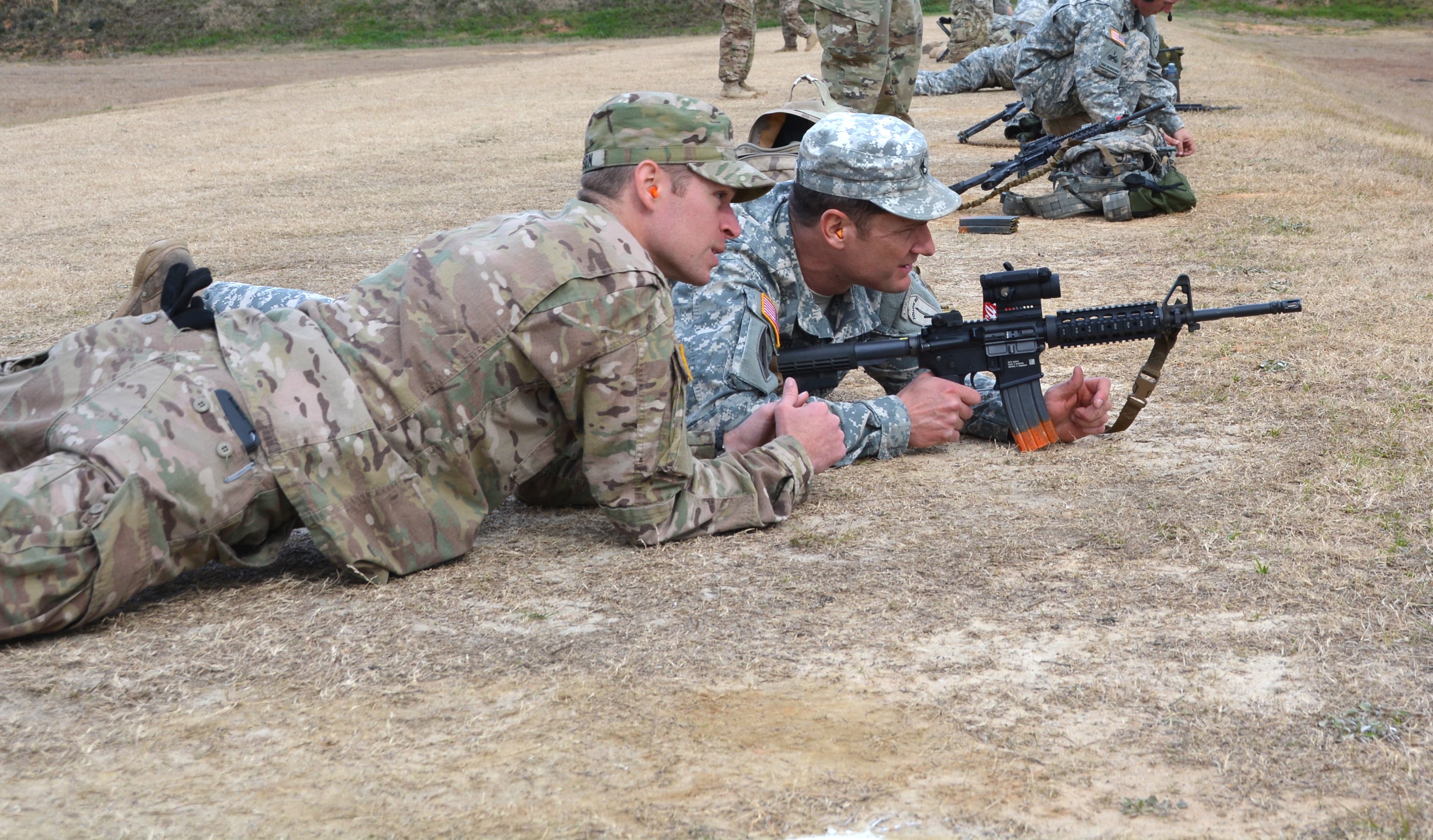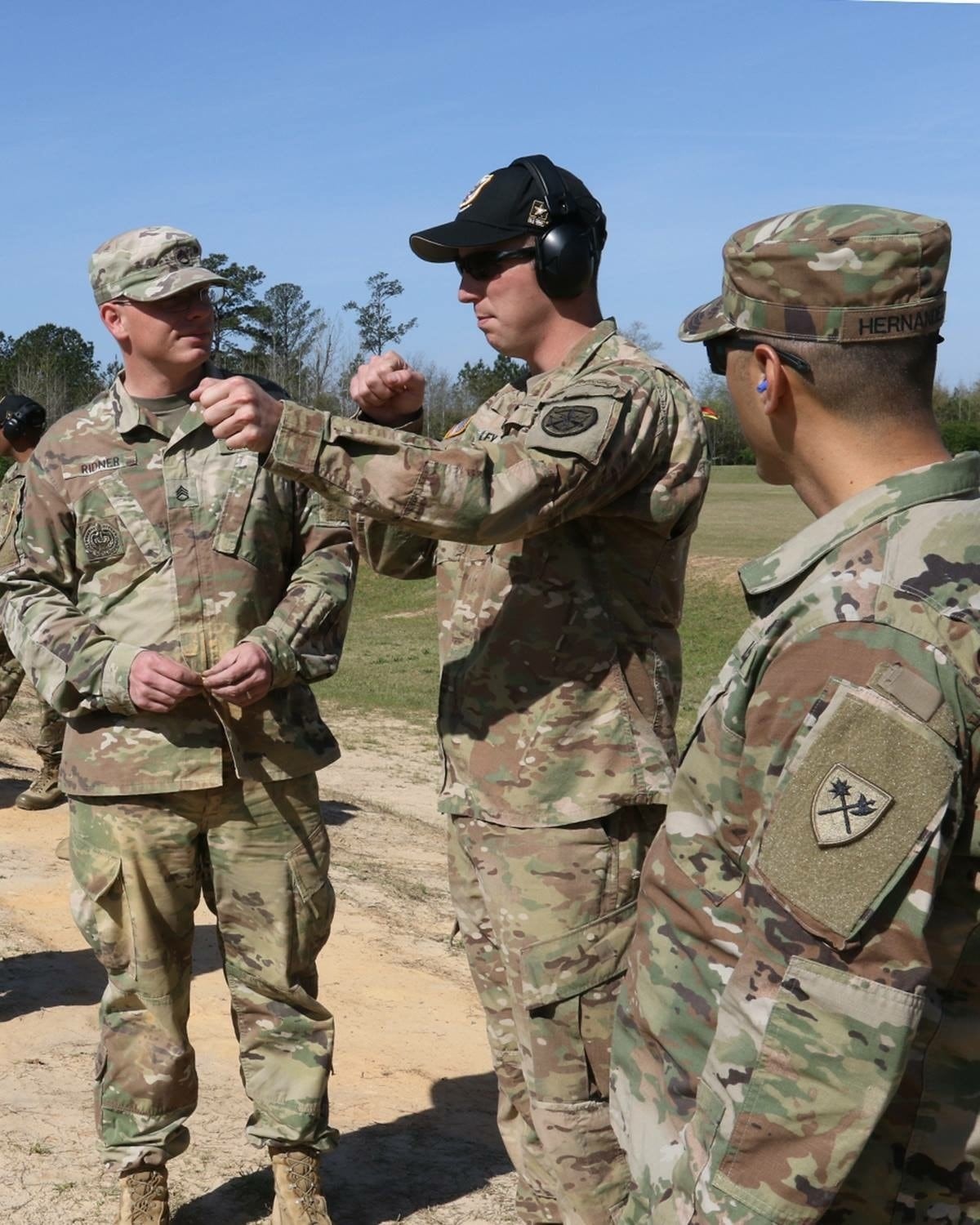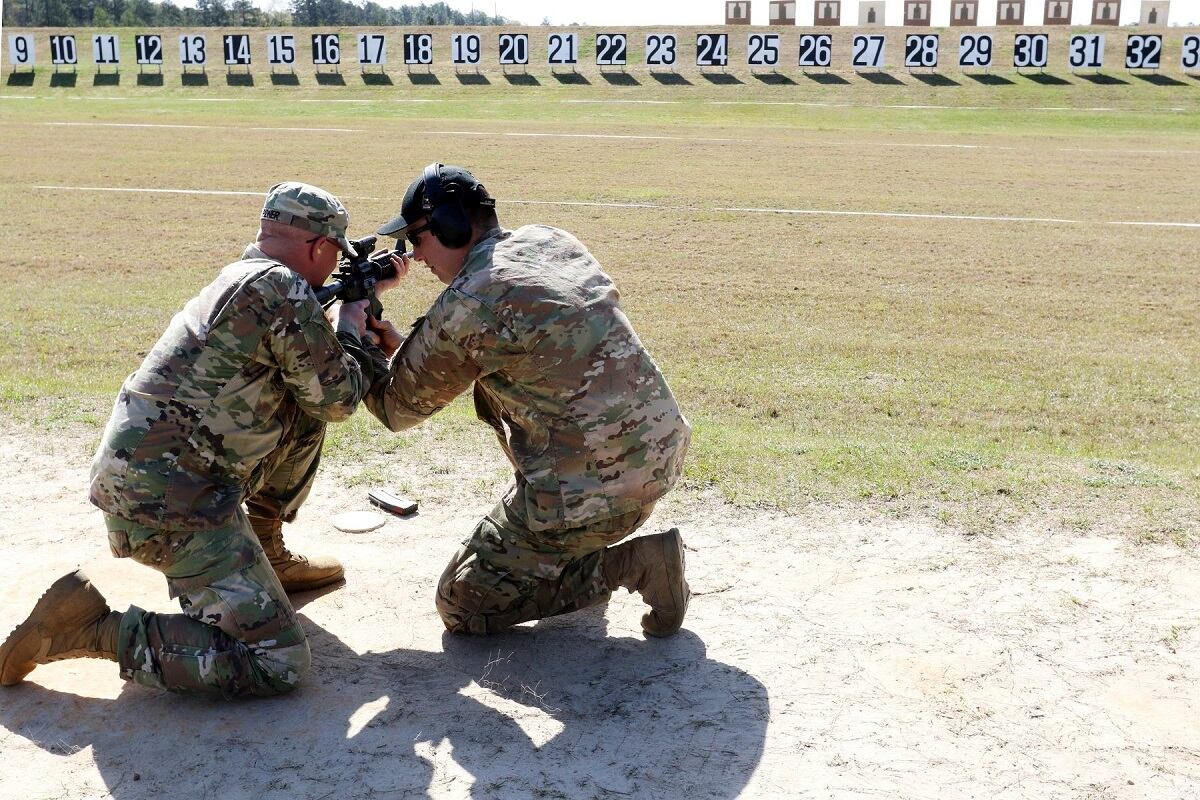Growing up in a small Pennsylvania town, Staff Sgt. Brad Balsley would often spend time playing with toy trucks as his police officer father practiced pistol shooting on the range for competitions he did in his spare time.
Decades later Balsley has entered the ranks of fewer than 1 percent of soldiers who have earned multiple distinguished marksman badges.
In March, he became only the 17th soldier in 134 years to become “triple distinguished” meaning he consistently placed in the top 10 percent in service pistol, service rifle and international pistol competitions.
RELATED

Balsley nailed down the international distinguished pistol marksman badge in 2012 and picked up the service rifle badge in 2015.
It was at the annual U.S. Army Small Arms Championships, also known as the “All-Army” at Fort Benning, Georgia, where he earned his service pistol badge.
More than 200 soldiers from 39 states competed.

Soldiers can fire either the 1911 .45 caliber handgun or the Beretta M9 9mm service pistol for their competitions. Balsley shoots the M9.
The Army’s newest sidearm, the M17, a Sig Sauer 9mm pistol that is part of the Modular Handgun System fielded last year, will likely become a part of future competitions but isn’t yet in the service matches.
Balsley hasn’t shot it yet.
For the rife it’s either the M1 7.62mm rifle or the M16 5.56mm rifle. Balsley shoots the M16.
The international pistol shooting competitions are highly accurized .22 caliber pistol matches.
He shoots a Pardini pistol that uses a five-round magazine.
The distinguished badges began in 1884, established by Gen. Phillip H. Sheridan to encourage soldiers to get involved in competitive marksmanship. Soldiers and civilians can earn the badges by picking up points at “Excellence in Competition” matches held throughout the country each year.
Slightly more than 3,000 soldiers had earned the rifleman’s badge and 1,740 earned the pistol shot badge as of 2009. About 400 had been awarded both. But Balsley is the 17th in history to capture all three.
Historical rows show shooters taking decades to earn separate badges, some ranging 30 years between the first and third badges. The staff sergeant managed his in six.
Balsley first began shooting with a single-shot .22 rifle but quickly moved to pistol shooting and entered a now somewhat bygone style of shooting known as bowling pin shooting, entering his first competition at age 10 in 1998.
He continued competing into his teenage years. Someone was watching.
He was in his high school senior English class when he got a missed call on his phone from a sergeant at the Army Marksmanship Unit asking him to come down to try out the Army shooting style.
The civilian shooting matches were more fast paced with bigger targets but the Army matches are much more refined with key positions and miniscule accuracy – a much slower-paced shooting style.
The AMU soldier wanted to see if Balsley could adapt. He did.
Since he enlisted in 2006 that’s exactly what he’s done – shoot and teach others to shoot.
As an instructor he learns all the Army shooting platforms for small arms from service pistol to long-range sniper rifles to help soldiers become better shots.
Though shooting is his job, he still enjoys it in his off time, competing in U.S. Practical Shooting Association matches and occasionally going to the range to blast shotguns or even Civil War era-style cap and ball revolvers.
He’s not the guy you want to watch a movie shootout with, though. He can’t help but pick apart the flaws.
The best movie shootout scene for accuracy he can think of? The bank robbery shootout in the 1995 film “Heat” starring Al Pacino, Robert De Niro and Val Kilmer.
The worst? Curving bullets as shooters flung pistols in wide arcs while firing in the 2008 film “Wanted,” starring Angelina Jolie and James McAvoy.
Todd South has written about crime, courts, government and the military for multiple publications since 2004 and was named a 2014 Pulitzer finalist for a co-written project on witness intimidation. Todd is a Marine veteran of the Iraq War.





